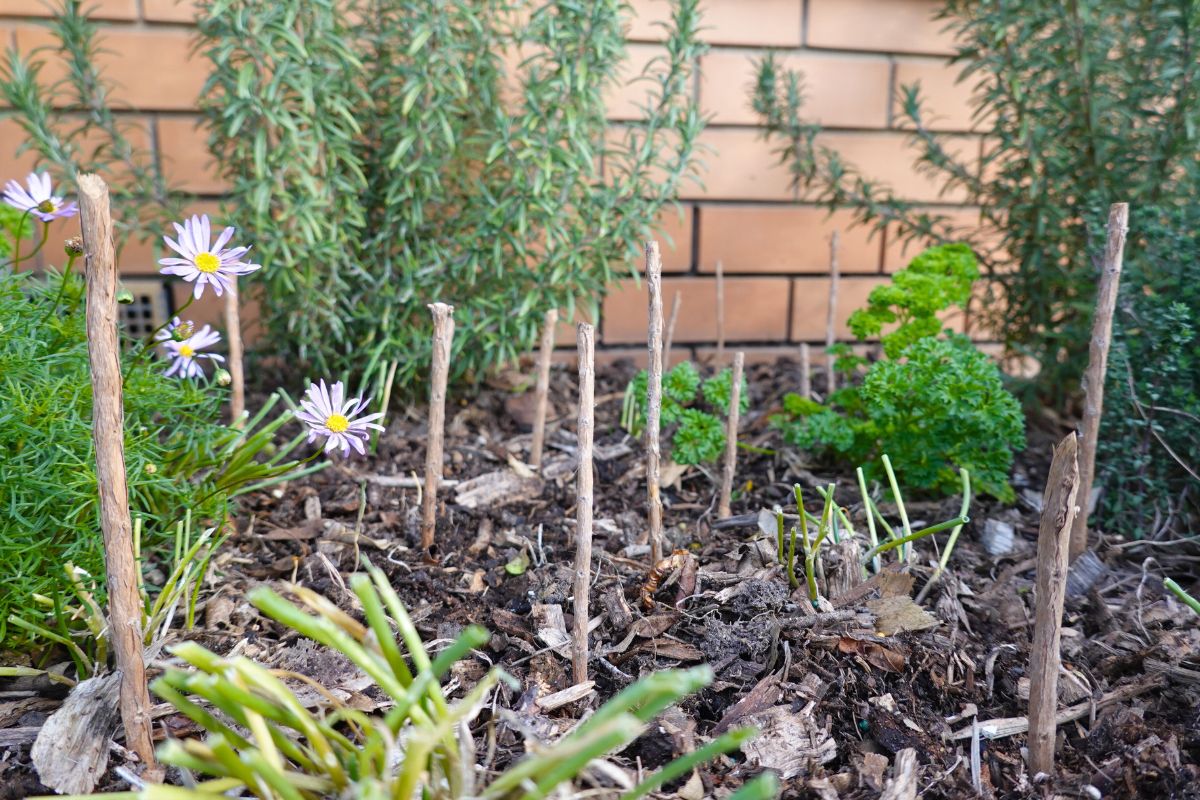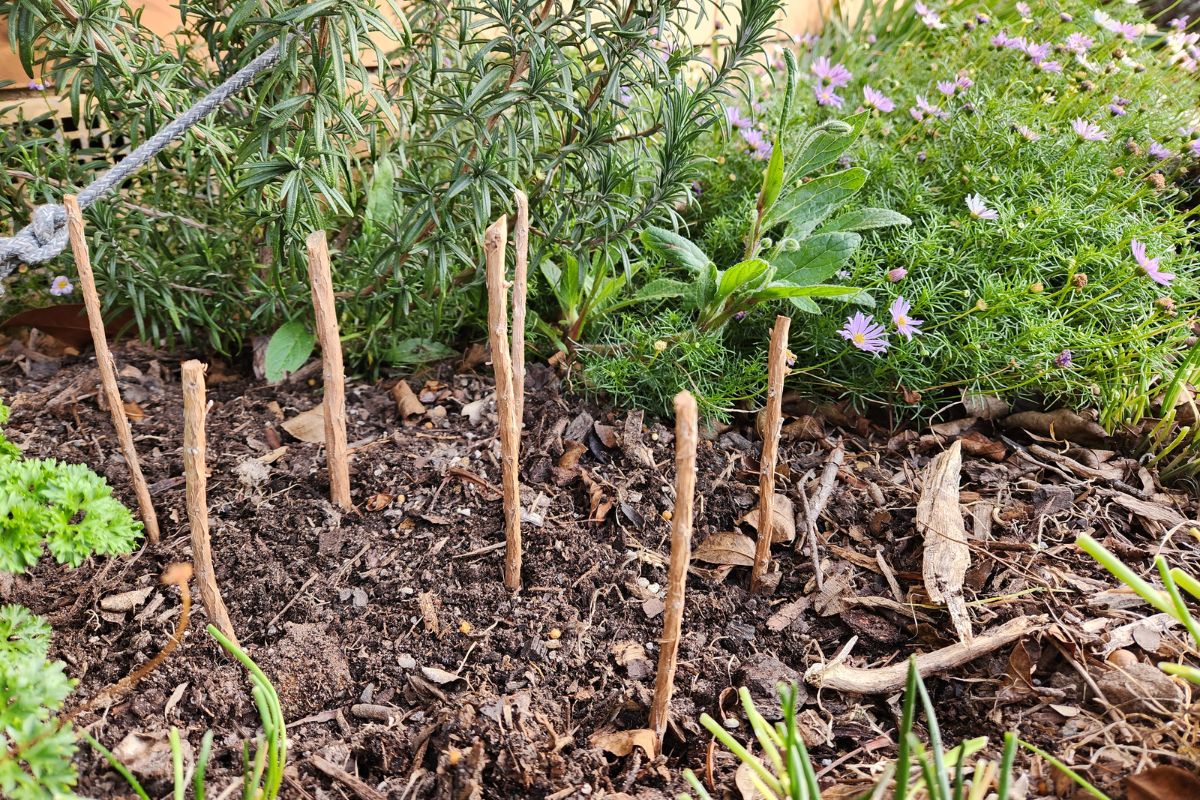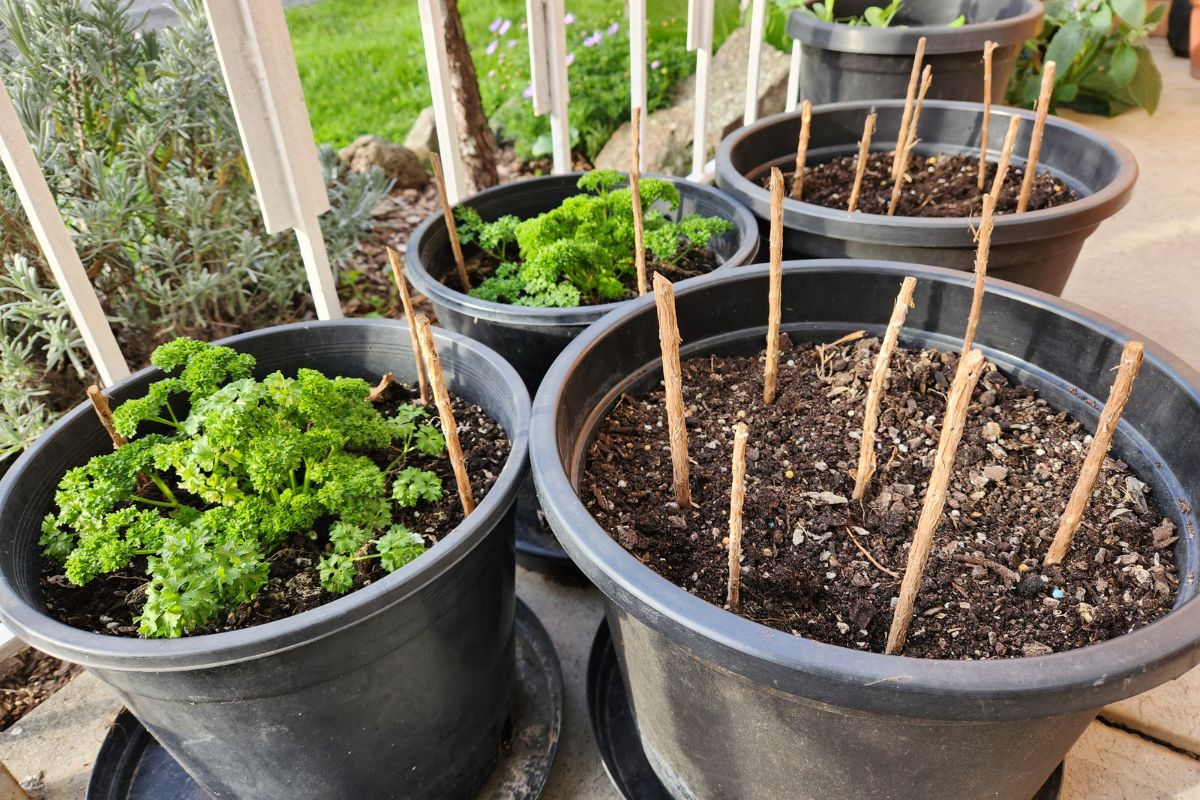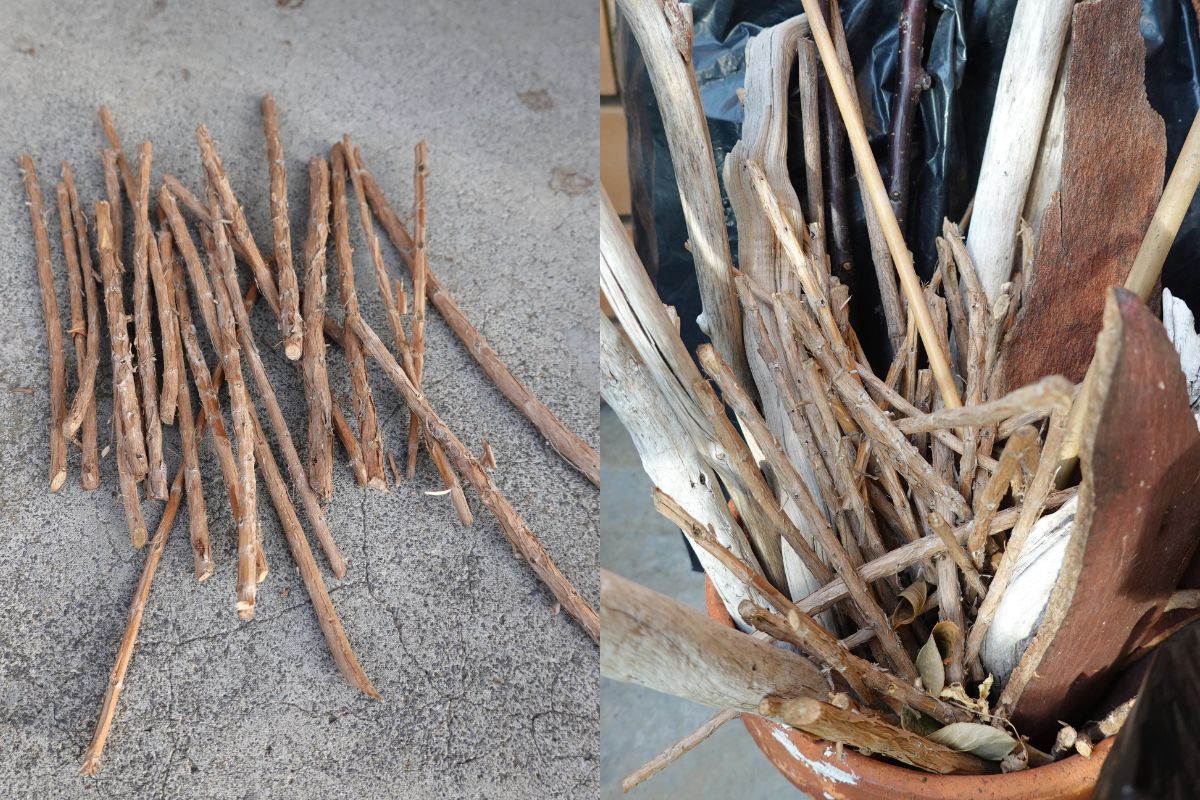We all anticipate pests showing up once our plants are flourishing or our crops maturing, but sometimes, pests can show up really early. In fact, some pests, especially birds, can arrive on the scene right after you sow your seeds, and cats love investigating freshly turned soil.
This may not be quite as disheartening as seeing pests attack ready-to-pick fruit or flowers that are only hours away from peak bloom, but it is still frustrating to see newly sown seeds dug up or seedlings damaged.
In fact, these kinds of early attacks catch a lot of gardeners off guard. But don’t worry – there’s a remarkably simple pest-control technique that often proves helpful in these situations. It’s called the stick method, and we’ll explain everything you need to know about it below.
What Is the Stick Method?
The stick method couldn’t be simpler: You simply insert sticks into the ground vertically near the seeds or seedlings you’ve recently sown or planted. Try to locate them close to the seeds without placing them so close that they’ll impede the growth and development of the plant.
The sticks will help discourage some common pests and give your seeds the chance to germinate, grow, and thrive.
You don’t need any tools to implement this method and while you’ll want to place the sticks relatively close to each other (about 15-20cm apart), you don’t need to measure the distance exactly.
You can use just about any kind of stick, as long as they’re long enough (anywhere between 30-60cm is a good guideline), and thick enough that you can drive them into the soil. You can simply collect suitable sticks from your garden, or you can purchase plastic or bamboo stakes.
Note that although the stick method is typically used in small, backyard garden situations, it can also be very effective for plants grown in containers.
What Pests Does the Stick Method Repel?
The stick method is primarily intended as a method for repelling birds. Birds often dig up freshly sown seeds as part of their foraging habits, and they may also damage freshly sprouted seedlings.
However, the stick method also repels another “pest” species that causes problems for some gardeners: domestic cats.
Though cats may nibble on seedlings at times (especially if you’re growing catnip), cats aren’t usually interested in eating your seeds. Instead, cats tend to cause the most problems by using your garden plot as a toilet. Obviously, most gardeners are not happy about the things cats may leave behind after using the garden in this manner, but their digging activities may displace your seeds or young plants.
Fortunately, the stick method tends to repel both birds and cats pretty effectively.
However, it doesn’t prove as effective at repelling other types of pests such as insects, other invertebrates, and rodents, so it certainly doesn’t represent a solution to all of your pest-control needs.
Why Does the Stick Method Work?
The stick method is thought to work for a few different reasons, including:
- It disrupts the foraging activities of birds. Instead of being able to forage in an unobstructed manner, the sticks get in their way.
- The sticks prevent the birds from being able to escape quickly. Because the sticks prevent birds from being able to stretch their wings out fully, they feel vulnerable when trying to weave through them.
- The sticks make cats uncomfortable. They can’t move as freely around the sticks as they would like, so they simply look for somewhere else to use as a toilet.
In a nutshell, the sticks simply alter the environment in a way that makes birds and cats less comfortable, which convinces them to look elsewhere for the resources they need.
Pros and Cons of the Stick Method
Like every other pest-control approach, the stick method presents a set of pros and cons. We’ll outline some of the most notable examples of each, so that you can decide whether it’s worth trying in your situation.
The Stick Method Pros
Some of the best things about the stick method include:
- It’s affordable, if not outright free. You may have to invest a little bit of money if you opt to purchase stakes and a mallet to hammer them into the soil, but you can often find suitable sticks lying around your garden.
- It doesn’t rely on pesticides. Pesticides are useful (and sometimes necessary) in gardening, but it’s always nice when you can implement organic methods instead.
- It doesn’t take a lot of time to implement. The most time-consuming part of the process will usually be finding and collecting the sticks; it only takes a few minutes to install them.
- It doesn’t harm the pests. While you don’t want birds or cats digging up your seeds, you don’t want to hurt them, either. Fortunately, this method simply encourages them to go somewhere else.
- It doesn’t represent a hazard to pets or people. Unlike poisons or traps, which represent a safety issue, the stick method is unlikely to injure people or non-target animals.
- The sticks can provide support for the plants. If you select good sticks, you can use them to provide support for your beans, tomatoes, or other climbing crops.
- It works in containers too. Container gardeners often face a variety of unique challenges that traditional gardeners don’t have to worry about, but the stick method also works very well in containers.
The Stick Method Cons
Obviously, no method of pest control is perfect, and that includes the stick method. Here are a few drawbacks and limitations to the approach:
- It’s sometimes challenging to find the perfect sticks. Even though you don’t have to find “perfect” sticks for this method, it helps to find ones that are long enough and strong enough to penetrate the ground, which isn’t always easy. Branched sticks can also be used and can create a mini twiggy canopy over the area you want to protect.
- It isn’t effective against all pests. The sticks won’t do a thing to protect your seeds from rodents or insects, so you may need to implement additional pest-control methods for complete protection.
- It’s generally not realistic for large gardens. If you’re fortunate enough to have a really large garden, you’ll likely find the stick method is simply too time consuming to implement. It’s best applied to small gardens, planter bags, and other types of containers.
Tips & Tricks
The stick method usually works pretty well, but there are a few things you can do to help ensure it works as well as it possibly can. This includes:
- Be sure that the sticks are smooth, as this will make it harder for the birds to grip and remove.
- Always push the sticks fairly deep and firmly into the ground as this will make it more difficult for a bird to pull them out.
- Keep your sticks! Once you remove the sticks, store them somewhere until you need them for your next batch of seeds or seedlings, so you won’t have to find or purchase new ones.
- Incorporate the stick method into your regular seed-sowing routine – the birds may not show up with every crop, but there’s no harm in being prepared anyway.
- You could let your sticks do ‘double-duty’ by labelling them with little pieces of coloured tape and then using different sticks to identify different plant species.
***
Battling pests is simply a part of gardening, and, unfortunately, they can prove frustrating in several different ways and at varying times during the plant-growing process. Having a wide range of pest-control strategies you can implement as needed will give your seeds and seedlings the best possible chance of surviving and thriving. At different times, you may need to incorporate trap crops in your garden or hang bird scare tape, and of course, implement the stick method.
Give it a try the next time you’re sowing seeds or planting out seedlings in a small garden or in containers because you’ll likely find it to be a helpful and effective method of deterring pests.
 Sticks make it difficult for birds to forage
Sticks make it difficult for birds to forage
 Sticks placed fairly close together
Sticks placed fairly close together
 Sticks work well in pots and containers
Sticks work well in pots and containers
 Save your sticks and reuse them next time you sow seeds or plant seedlings that need protection
Save your sticks and reuse them next time you sow seeds or plant seedlings that need protection





